BEHIND THE HEADLINES
Rural cost of living crisis
The cost of living crisis is felt acutely in the countryside, where rural residents face higher prices for fuel, transport and food. Farmers, meanwhile, not only face these pressures themselves but also find that prices for their raw farming materials are soaring above the rate of inflation
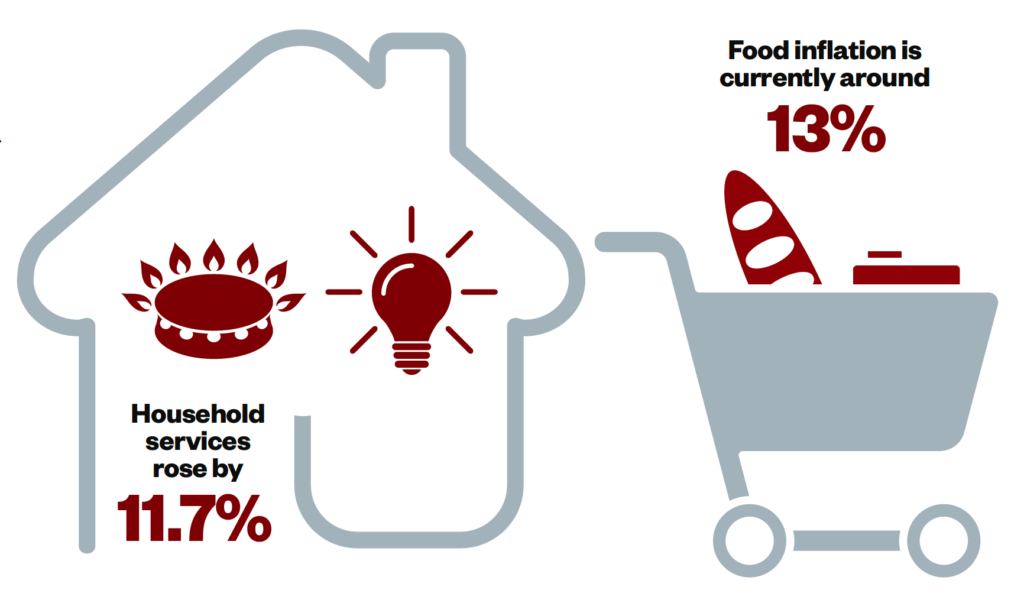
WHAT’S THE PROBLEM?
Latest data for inflation puts the UK rate at 9.3% for the 12 months to October 2022. Yet this figure is calculated from a range of products and utilities that can be more expensive for those living in the countryside. According to the Office for National Statistics, the largest upward contributions to the annual inflation rate came from housing and household services (principally electricity, gas and other fuels) and food and non-alcoholic beverages. Housing and household services rose by 11.7%, while the cost of a meal out rose by 10.2% year on year. The British Retail Consortium says that food inflation is floating at around 13%.
According to the Rural Services Network (RSN), those living in the countryside spend much more on essentials, such as heating, transport and housing. An RSN report says they face “significantly higher” costs but earn much less than their urban counterparts.

URBAN VS RURAL WAGES
The cost-of-living picture is nuanced. According to data from DEFRA, in 2020, the median workplace-based annual salary in predominantly urban areas (excluding London) was £25,400, compared to £22,900 in predominantly rural areas. However, for those who work from home, this gap all but disappears, with the median residence-based earnings in predominantly urban areas put at £25,100, compared with £25,000 in predominantly rural areas. This relatively even level of income, however, is often negated by the fact that, as the RSN points out, rural residents face higher costs, for transport, heating and housing.
TRANSPORT
A £2 bus fare (£1 for children) cap was introduced across many areas of England for the first three months of 2023 (Scotland and Wales have similar schemes) but rural advocates say this is meaningless if services are intermittent or do not serve remoter areas. The Campaign for Better Transport says a long-term subsidy is needed to keep fares down. Poor transport infrastructure reduces rural communities’ ability to access health services, education, skills training and employment. Consequently, people in rural areas tend to be much more reliant on cars.
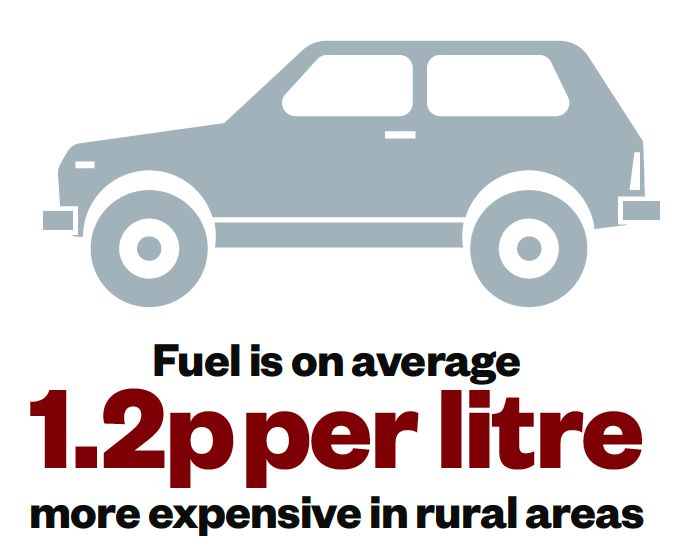
HEATING OIL
Around 1.5m people in the UK use heating oil rather than mains gas. The use of heating oil for housing is far greater in rural areas: 52.6% of rural homes are believed to be off the gas grid, compared to just 9.8% of urban properties. Homes in rural areas tend to be less energy efficient, with 60% of rural homes having an EPC energy rating of D or below.
The Countryside Alliance says more needs to be done to help rural householders cope. Unlike gas and electricity, there is no regulator for heating oil to cap prices. Impacts of rises are also felt more quickly, as heating oil is bought in real time, unlike gas, which is bought months in advance. A Fuel Poverty Coalition survey found that half of those who live in rural households are classed as vulnerable – with one in five elderly people living in cold, damp homes and 44% of them now living in fuel poverty. The latest data from the RSN shows that the reduction in fuel bills needed to take rural households out of full poverty is £501, compared with an average in England of £223. The Government says it has issued alternative fuel payments to households who are off grid.
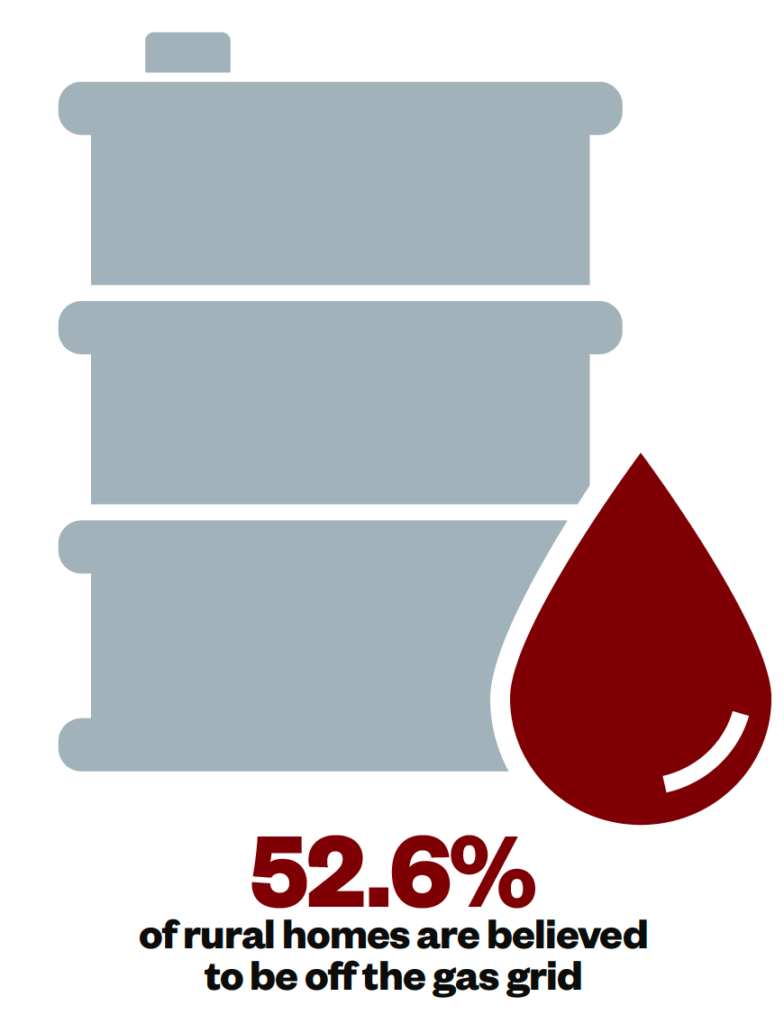
UNAFFORDABLE HOUSING
The Rural Services Network says that rural house prices are almost 40% higher than in urban areas of England (excl London), with rural villages and hamlets increasing to 55% higher. Year on year, estate agent reports indicate that rural house prices outgrow their urban equivalents. Rural households on a low income now spend about half of their earnings on rent – almost 5% more than low-income households in urban areas. Government data shows that, in 2021, the average lower quartile house price was 9.2 times the average lower quartile earnings in predominantly rural areas, compared with 8.0 times in predominantly urban areas (excl London).
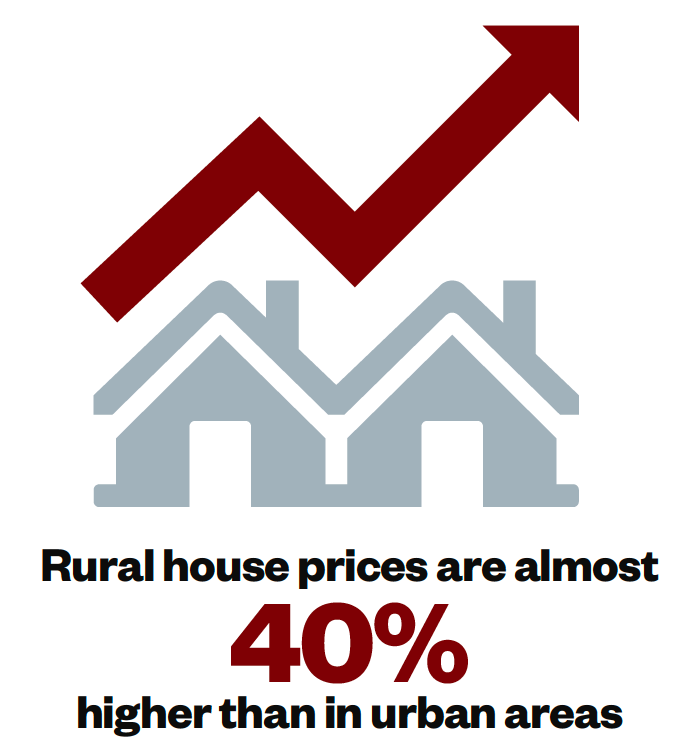
The CLA says that while national inflation may be around 9–11%, agricultural prices have risen by 25% over the past six months.
RISING COSTS FOR FARMERS
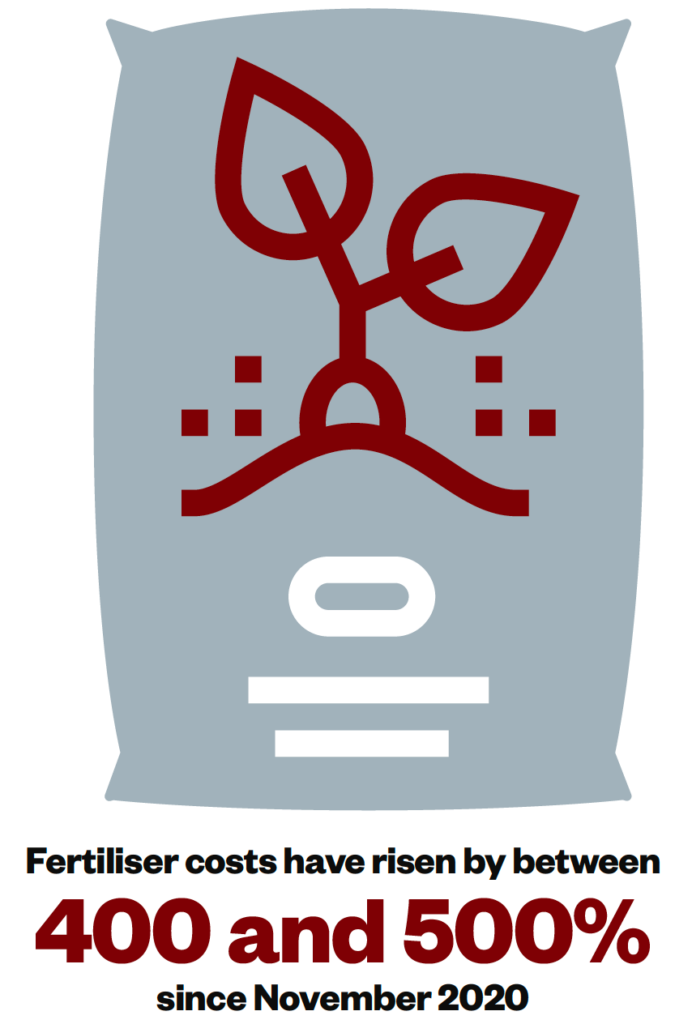
Farmers groups caution that the full effects of food inflation have yet to filter through and will only become apparent as crops are harvested and food processed later this year. The County Land and Business Association (CLA) says that while national inflation may be around 9–11%, agricultural prices have risen by 25% over the past six months. Fertiliser costs have risen by between 400 and 500% since November 2020. Farmers who grew 2022’s crop with fertiliser costing £280/tonne are now paying £800/tonne, according to estate agent Strutt and Parker.
Rural fuel pressures are being felt acutely by farmers. Several farmers groups say that recent reductions in oil prices (petrol prices dropped to £1.49 a litre in January 2023) make little difference as the price is still eye-wateringly high. Reports are increasing of food growers powering generators with red diesel – awful from an environmental point of view but a signifier that costs may have passed a threshold where this becomes viable financially.
Fuel costs are also affecting the ways in which farmers go about their work, with the NFU, the CLA and ADAS (agricultural consultancy) reporting changes in techniques and practices, such as fewer blanket applications of fertiliser, fewer passes over a field, less drilling or ploughing.
With fertiliser costs so high, many farmers now view the manure their chickens produce as a commodity to be sold across counties to other farmers, who seek alternative sources of fertiliser. DEFRA says it is updating payment rates for both Countryside Stewardship revenue options and capital items from the start of this year.
Have your say?
What do you think about the issues raised here? Write to us or email editor@countryfile.com